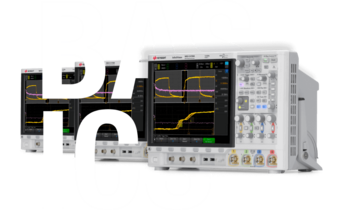Keysight MX0021A
InfiniiMax Ultra Probe Ampilifier / 13 GHz / AutoProbe 2 Interface




Keysight MX0021A
InfiniiMax Ultra Probe Ampilifier / 13 GHz / AutoProbe 2 Interface
USD 3,928.80
List Price USD 19,644.00
Cannot ship to:
European Union
Switzerland
Norway
Turkey
Unit only ships within China.
Unit ships worldwide.

Keysight Used
Keysight MX0021A USD 3,928.80
From
USD 3,928.80 Save 80%
Get peace of mind only Keysight can offer. With KeysightCare Assured and manufacturer calibration.
| New Keysight Calibration before shipping* Extends lead time by <4 weeks | USD 682.00 |
| KeysightCare Assured - 1 year incl. Keysight Extended Warranty | USD 768.00 |
| KeysightCare Assured - 2 years incl. Keysight Extended Warranty | USD 1,536.00 |
| KeysightCare Assured - 3 years incl. Keysight Extended Warranty | USD 2,304.00 |
| KeysightCare Assured - 5 years incl. Keysight Extended Warranty | USD 3,840.00 |
*If the unit is not yet calibrated (see listing), a calibration is required to purchase a KeysightCare plan.
- Test and validate high-speed technologies with the 13 GHz probe amplifier (AP2).
- Experience the highest input impedance in midband frequencies for low-energy probing.
- Boost test margins with the lowest signal degradation.
- Probe small devices with the super-flexible micro probe head or choose from the widest variety of compatible probe heads for your unique application.
- Measure differential, single-ended, and common mode signals with a single probe tip.
- Use with Infiniium UXR-, 90000 X-, Q-, V-, and Z-Series oscilloscopes.
Keysight’s MX0021A InfiniiMax Ultra Series probe amplifier improves usability because you can measure differential, single-ended, and common mode signals with a single probe tip.
When you use a probe to connect your signal to your oscilloscope, it becomes part of the circuit affecting your test. Your probe may be hiding signal details, loading down your signal, or distorting it. InfiniiMax Ultra Series probes have the lowest loading for minimal impact to your circuit. Boost your test margins and gain measurement confidence with their unprecedented accuracy. Ensure your entire measurement system is helping you see the truest representation of your signal.
These probes have the lowest noise and capacitive loading and the lowest loading across more frequencies due to their RC high impedance profile. The InfiniiMax Ultra Series supports InfiniiMode and has a user-defined AC calibration mode, a wider input voltage range, more accuracy with unique S-parameter characterization, lower capacitive loading, a wider input voltage range, micro / socketed probe heads for smaller density probing, and more bandwidths. The InfiniiMax Ultra Series has an RC input impedance architecture with the lowest loading and least signal distortion across the widest frequency range.
InfiniiMax Ultra probes have three attenuation ranges — 1:1, 4:1, and 8:1 — giving you superior noise performance and large voltage ranges, all while maintaining maximum bandwidth. The input range automatically configures depending on the size of the input signal and vertical scale of your oscilloscope.
Choose from the three flexible input dynamic ranges from 600 mVpp at 1:1, 2.5 Vpp at 4:1, and 5 Vpp at 8:1. Clearly see and know when your design is satisfactory, keep up with standards, easily probe small devices, and reduce test complexity with the InfiniiMax Ultra Series probes.
Accessories only included if shown in the pictures. No power cord included.
Other accessories that are not listed and included in the offer can be purchased separately at an extra cost with your purchase of a Keysight Used or Keysight Premium Used unit. Please specify in the comment field which additional accessories or support you are interested in.
For separate or post-purchase ordering, please contact your local Keysight office or Keysight Partner here. Or check our online store if available for your region here.














